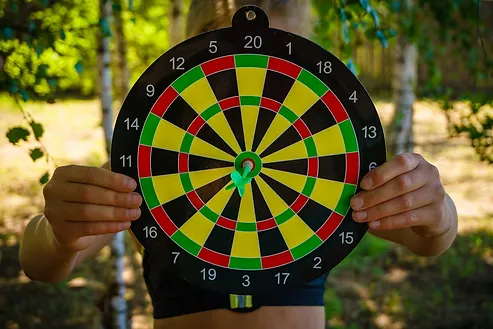By: Kyle Xu
The current world No. 1 darts player, Michael Smith, won the World Darts Championship in London, where he achieved nine perfect throws in a row. He says that he can still be better and is “getting better every year.”
However, he may never reach perfection. When he aims for the “triple 20” section of the board, the highest-value section of the board, he hits it less than half of the time.
Though professional darts is far from the center of attention in the sports universe, it is a useful study of progress toward perfection. The present-day professional darts players are shown to achieve much higher scores than their counterparts did a generation ago.
Keith Deller hit the triple-20 37 percent of the time at the 1983 championships. However, Smith hit the section 46 percent of the time at his championships this year. The best of the best have been improving every decade, and the same is true for hitting the bull’s eye in archery or swishing a free throw in basketball.
But why do our athletes always seem to get better, generation by generation? And what happens when they reach the point where they are perfect?
One reason lies in technology. Athletes may be using better equipment to boost their scores. An example of this is in swimming, where modern athletes wear suits sewn together by radiation. The sport of darts itself is also no exception; throughout the years, the darts have become thinner and easier to stick and throw.
But the triple-20 region has also gotten larger. Before the 2000s, the wires that marked the edges of sections were 1.8 millimeters in diameter. But they are now about 0.6 millimeters, making the clear area of the section much larger.
30 years ago, the world champion John Lowe had a three-dart average of 84. But Smith, 2023’s champion, had an average of 101.
What else? What other than technology makes today’s players better? It’s that more people play. If the jackpot money increases, it’s extremely likely that more people will be drawn to the sport because they can earn more.
In 1993, the women’s professional basketball league paid players $50 a game. Robelyn Garcia, a professional basketball player, said that she had known teammates who abandoned the game because it didn’t pay enough.
In 1997, the WNBA had eight teams and paid their players somewhere between $15,000 and $50,000. Its free-throw shooters hit 83.3 percent of their throws. But three years later, the free-throw average reached 88.7 percent. Around now, the average has reached 92.4 percent, with 12 teams paying their players $62,000 to $235,000, still a decent increase even after inflation.
Source:
https://www.nytimes.com/2023/08/05/upshot/darts-sports-perfection.html











